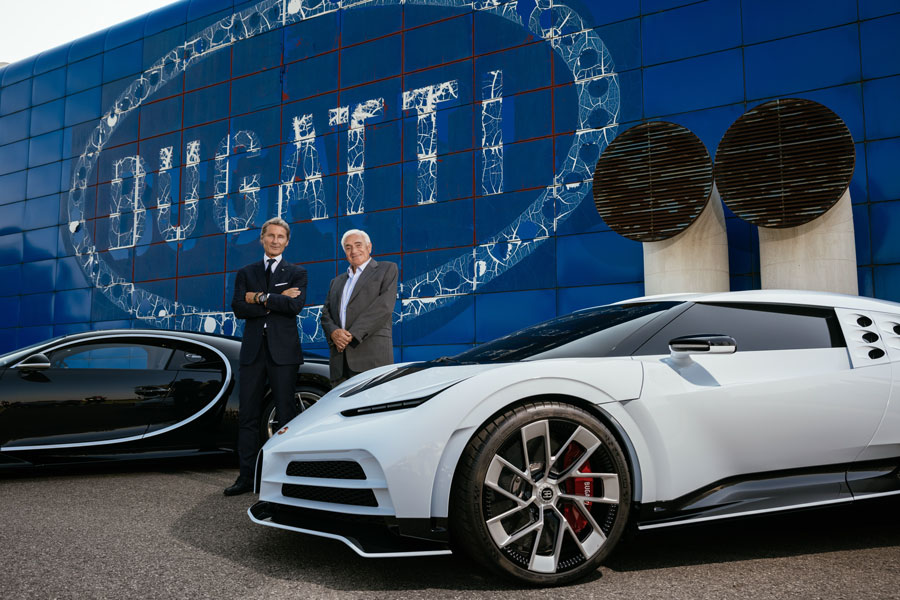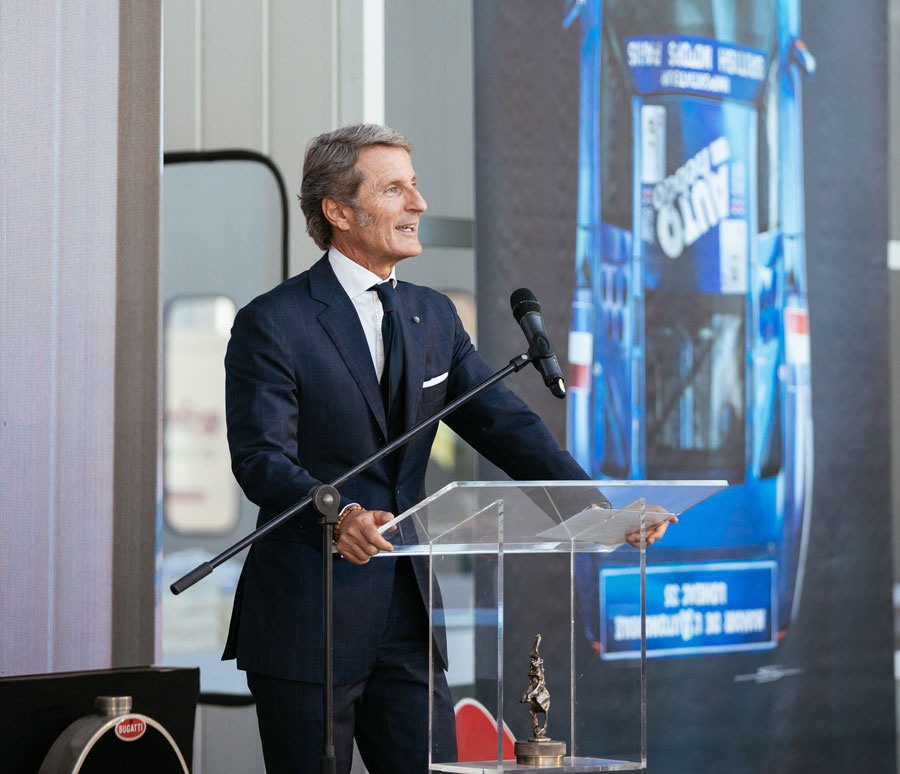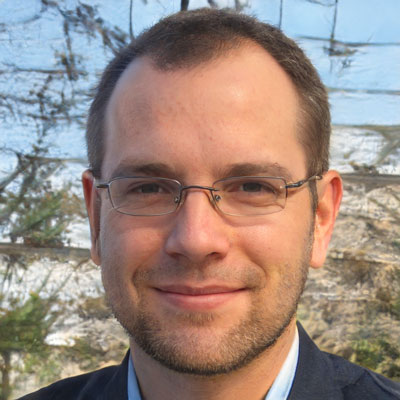Bugatti Enthusiasts Celebrates 30th Anniversary Of Historic Factory In Campogalliano, Italy

ITALY – A torch hung in front of the radiator of the first car. A symbol of rebirth. When on Sept. 15, 1990 exactly 77 pre-war Bugatti cars drove from Molsheim to Campogalliano, it was more than just an excursion. It marked a new beginning for the legendary brand – as well as the 109th birthday of Ettore Bugatti. With the opening of the Fabbrica Blu (Blue Factory) in the Italian town of Campogalliano, the first Bugatti in 30 years was produced once more, the EB 110. On Sunday, Sept. 13th, Bugatti enthusiasts gathered near Modena to celebrate the company’s 30th anniversary.
Also in attendance was Romano Artioli, former owner, designer of the factory and creator of the EB 110. It was he who in 1987 acquired the Bugatti name rights and developed the car in Campogalliano after a considerable amount of planning. With the aim of being able to acquire qualified employees more easily, he set out to find a site in the vicinity of Italy’s super sports car brands – and found what he was looking for in the area west of Modena. Architect Giampaolo Benedini designed an elegant production site, as technologically state-of-the-art, modern and avant-garde as Bugatti cars themselves. The car factory, at that time the most modern in the world, was built for around 200 employees on a site covering 240,000 square metres. The site comprised the headquarters building with a design studio, the engine and test development area, production halls, a test track, a restaurant for hosting guests and a showroom for displaying the cars.

To this day, the blue building of the development department continues to symbolise the beating heart of the factory. Architect Giampaolo Benedini created light-flooded rooms inside a large hall with radii instead of edges. When the employees moved in, the walls gleamed in bright Bugatti blue and blossom white, some rooms featured Carrara marble floors, and the foyer floor was laid with mosaics. The engineers and developers worked in fully glazed buildings. The blinds of the round building with it’s glass facade adjusted automatically to the daylight. EB emblems adorned many of the buildings both inside and out. Giampaolo Benedini had designed a lasting monument to the automobile.

Factory sets standards
“The Blue Factory set standards in the automotive industry at that time; it was more of a manufactory than an industrial plant. Romano Artioli had a feel for innovation, but was always conscious of the French history and significance of Bugatti,” says Stephan Winkelmann, President of Bugatti. Artioli incorporated an antique wooden door from the earlier factory in Molsheim into the new building. This was the door that Ettore Bugatti once walked through. The foyer featured original drawings by Ettore Bugatti, French flags and a Type 35. The hall ceiling of one of the rooms was based on the wheel of the Type 59.
After three years of construction, the factory was officially opened on Sept. 15th, 1990. One year later, in 1991, the first EB 110 super sports car left the factory as one of just 128 vehicles. EB are the initials of Ettore Bugatti, while 110 stood for his 110th birthday. The sports car with the carbon-fibre monocoque was a sensation: 3.5-litre V12 engine, four turbochargers, all-wheel drive, six-speed gearbox and a power output of between 560 and 610 PS. The EB 110 accelerated from 0 to 100 km/h in up to 3.3 seconds and had a top speed of 351 km/h – making it the fastest series production car of it’s time. However, in 1995 the brand’s renaissance came to an abrupt end: the market for super sports cars collapsed and demand fell dramatically. (miedemaproduce.com The factory was forced to close.

The site with it’s buildings are still there today. The former Facility Manager Ezio Pavesi and his son Enrico continue to look after the complex, and organised the celebration with over 200 invited guests in compliance with current coronavirus regulations. The spirit of Bugatti is everywhere, even the Bugatti emblem still shimmers on the blue building of the development department.
Bugatti’s star rises once more
The Bugatti brand and it’s current models have long since risen to prominence once more. Following a brief hiatus, the Bugatti legend was revived in 1998. Since 2005, exclusive hyper sports cars like the Chiron and Divo have been produced by hand at the site in Molsheim, where Ettore Bugatti founded his company 111 years ago. Thanks to his dedication, Artioli breathed new life into Bugatti, making the EB 110 a brand milestone.
As a homage to this era and a tribute to the super sports car EB 110, the Centodieci1, Italian for 110, will soon be built. The special model is a modern interpretation of the previous very flat, wedge-shaped car. The small, hand-built series, limited to just 10 vehicles, is due to be delivered next year and has already sold out – priced from 8 million euros (net). The car is being built in Molsheim, France. The home of Bugatti for 111 years.
1 Fuel consumption, l/100km: not subject to Directive 1999/94/EC as overall type approval is currently not yet available



Comments are closed.